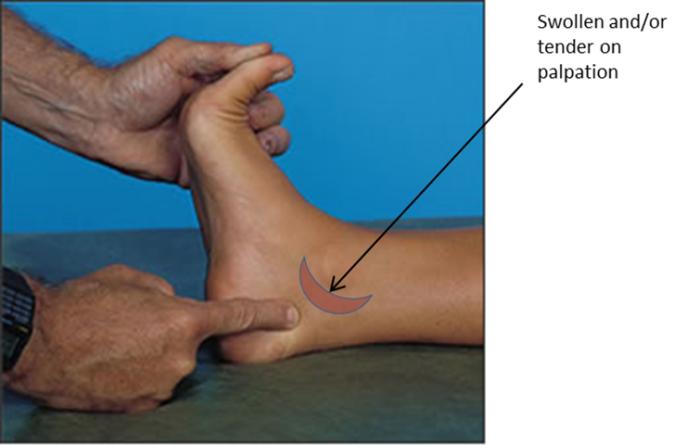Healthcare Professionals Hub
Medial Ankle Pain/ Tibialis Posterior Dysfunction (TPD)
Pathway
Clinical signs and symptoms
Patient Will
- complain of pain around medial malleolus which is often spontaneous at onset.
- struggle to perform a single leg heel raise
Patient May
- have simultaneous change in foot shape.
- have obvious hindfoot valgus (deviation of Achilles Tendon towards midline) and “too many toes” sign at lateral border of foot.
- be locally swollen posterior/inferior to medial malleolus and tender on palpation of tibialis posterior tendon.


Clinical Test – Heel raise

Ask patient to perform a heel raise on each leg – try for 8 to 10 repetitions.
- A patient without TPD should be able to do this without pain.
- A patient with TPD will struggle.
Refer to Sheffield MSK if:
You have a patient with both…
- spontaneous onset of medial ankle pain
- who struggles to perform a single leg calf raise for up to 8 to 10 repetitions
References/ Further reading
- Kohls-Gazoulis J et al Tibialis posterior Dysfunction: a common and treatable cause of adult acquired flatfoot BMJ 2004; 329: 1328-33
- Kulig K et al Nonsurgical management of Posterior Tibial Tendon Dysfunction with Orthoses and Resistive Exercise: A Randomised Controlled Trial Physical Therapy 2009; 89: 26-37
Assessment video
Clinical test for medial ankle pain or tibilias posterior dysfunction
–
Clinical test for medial ankle pain or tibilias posterior dysfunction
:
https://www.youtube.com/watch?v=u6E9Nd0Nrg0&t=3s